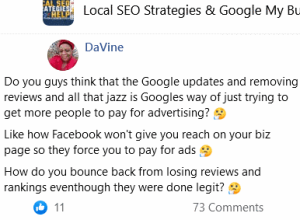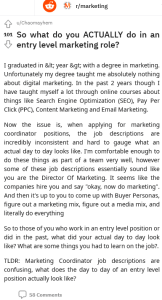Lesson 1: Bounce rate – Why 100% bounce can be a great thing.
A brief introduction
Hey guys,
Affiliate marketing has been my full time job or over 10 years now. In this time, one thing that never ceases to amaze me is how quickly and easily mis-information is spread.
Part of the problem is gurus. I have come across hundreds and hundreds. Most often these people have a whopping ego that just like to hear themselves talk. The reality: often they have less than a year of experience, or have never seen success themselves. But in a field where secrets are kept and the barrier to entry largely being knowlege, they flourish. People flock to them in search of answers.
It's not just people like Spencer Hawes, but also egotists that build themselves up to be figure in online forums. No single person I have met who positions themself as a "teacher" has an above basic understanding of affiliate marketing. The reason? It's multifaceted. Heck, the majority of "gurus" I know don't know anything about technical Search Engine Optimization (SEO) and most use theme builders because they don't understand html, Cascading Style Sheets (CSS) or JS. However – they all seem to be happy to comment on it.
So, to adress this gap, I plan on creating a series of posts that address misconceptions along with other useful information. Starting with bounce rate. I hope you all learn something 🙂
What is bounce rate?
A bounce is a metric that is recorded in your Google analytics report.
Now, let's break down what a bounce actually is:
A bounce has to start somewhere. And that's when a user clicks to your site. It doesn't matter where a user comes from. It could be Google search, social, or even a direct link from email.
Once on your site, a user will then click a link to be taken off your site. This could be by pressing the back button, by clicking through to your affiliate link or clicking through to another site in your references.
This is a bounce. I would add that a bounce means that no session duration is recorded against your site either. A bounce will always = 0 time spent on page.
If at any point a user clicks a link and views a second page on your site, then a bounce is not recorded. This could be clicking to the homepage, contact, about, another review, etc. It's at this point session time is recorded.
Let's take a look at some examples, to make sure we are both on the same page.
Example 1:
User clicks your site link in Google search → User arrives at https://<domain>.com/best-cat-reviews → User spends 5 seconds on single page → User clicks back button to return to Google search.
That's a bounce.
Example 2:
User clicks your site link in Google search → User arrives at https://<domain>.com/best-cat-reviews → User spends 10 hours on single page → User clicks referral link to buy recommended cat.
That's a bounce.
Example 3:
User clicks your site link in Google search → User arrives at https://<domain>.com/best-cat-reviews → User spends 10 seconds on single page → User clicks link to https://<domain>.com/ to return to home page.
That's not a bounce.
Do you want a high bounce rate or a low bounce rate?
Depending on your site, you'll want one or the other. Or even both.
It all depends on your content. I think the easiest way to explain this is to use examples…
Good bounce rate (high)
Let's face it: The reason we make those best/top 10/review posts is so that a user clicks a referral link to buy something, right? Well, a high bounce rate in this case is often a good thing. The goal of these money pages is to push people onto another sales site. That is their only real goal. In this case, you would want as many people who land on this page to click straight through to your referral. The result is a high bounce rate. A bounce here will not impact your search ranking.
Good bounce rate (low)
Informational pages, on the other hand, will generally want a low bounce rate. These pages often don't sell. Instead, they are created supplementary and their goal, in an ideal setup, is to drive traffic to the review pages. If these pages are a successful at doing this, people will click through to other pages on your site, resulting in a low bounce rate.
Additionally, sites monetized by display advertising will also want a low bounce rate. The more ads a user sees, the more you earn.
Bad bounce rate (low)
Ideally, you don't want a low bounce rate on your money pages. This would suggest that either your content isn't all that great or your conversion funnel is weak for the intent of that search. Admittedly this isn't always a bad thing, if a user clicks through to another review and buys something, then that's good. But ideally the landing page should be driving the sale for that search. It is worth mentioning that while this isn't wanted from a conversion standpoint, this can *potentially* help the page rank higher.
Bad bounce rate (high)
The back button. It's your enemy. It's bad news for your site, especially if a user came to your page through organic Search Engine Result Page (SERP) placement. A back button press indicates that the site isn't useful as per search intent, a user didn't find what they were looking for. It's the first clue that you don't belong in that SERP result. This is the bounce rate you want to avoid as it, along with other clues like pogo-sticking, can negatively impact your ranking.
How do you tell if a bounce was bad or good?
Here's the thing: Google analytics doesn't reveal whether a bounce is bad or good. It shows up as a bounce. In your analytics graph, that back button bounce is identical to a click through to your referral. One of these is bad. The other good. So how do you tell them apart?
You can set up tracked events on outbound links. In this way, you can seperate visitors who click referral links from people who click the back button.
I'll be straight up with you, if you are not tracking events, then you are not ready to enter the big leagues of affiliate marketing. The amount of extra insight events can provide is phenomenal. Do it sooner rather than later, so you have a history of reports to refer back to when making changes to your site.
If this is the first time you are hearing of "event tracking" then don't worry. It may be time consuming to set up initially, especially for larger sites, but it's pretty simple. There are plenty of beginner friendly guides a quick Google search away.
Conclusion
That's really all there is to it. Bounce rate isn't good. It isn't bad. It's just metric of measurement. Anyone who tells you "you need low bounce rate" is just parroting Guru trash. Your content is what determines whether a bounce is bad or good – and only you can answer that.
A 2-year-old Website Teardown: The Mistakes, Lessons, Profits
The Complete Guide to Pinterest
To Write Articles or Publish Content Fast
16 Months of Buying Links: What I learned, and What to Avoid
Backlinks for Content with Skyscraper Technique Case Study





